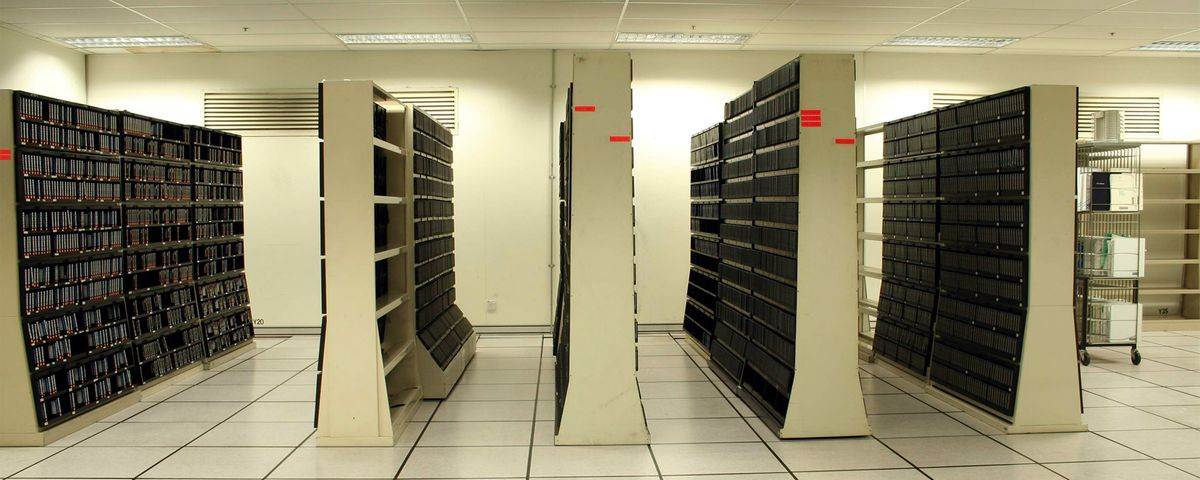
LTO-9 is Fully Backward-Compatible with LTO-8
Fujifilm has announced its first data tape cartridge using the specifications of the Linear Tape Open (LTO) Ultrium 9 specifications. LTO-9 tapes offer a 50% improved capacity over the previous generation (LTO-8) with enhanced access speeds of up to 900 megabytes per second (MB/s).
Crucially, LTO-9 is fully backward-compatible with the previous generation. Backwards compatibility is one of the primary marketing points of the LTO format: Enterprises can use LTO-8 tapes in LTO-9 drives, just as they could read LTO-7 tapes with LTO-8 hardware.
At Total Data Migration, we offer a comprehensive set of archiving and backup services including magnetic tape migration, conversion, and restoration. We’re excited about the capabilities of the LTO-9 format, and we’re ready to help your organization take full advantage of the benefits.
If your enterprise is considering an upgrade to LTO-9, it’s helpful to understand the capabilities — and limitations — of backwards-compatibility.
Previous LTO Formats Offered Greater Backwards Compatibility
The LTO format has been the most popular standard for air-gapped backups and archives since shortly after its introduction in 2000. Until the release of LTO-8, Ultrium drives offered read capability for two generations.
Some important considerations to keep in mind:
- This backward-compatibility was limited to read activities; write activities have always been restricted to one generation. In other words, an LTO-7 drive can read LTO-6 tapes and LTO-5 tapes, but the drive can only write to LTO-7 and LTO-6 tapes.
- With the release of LTO-8, both read and write capabilities were restricted to one prior generation. This change occurred due to advancements in tape density and read/write technology.
- All LTO Ultrium drives should be able to read data from cartridges regardless of the cartridge’s manufacturer.
- No Ultrium drive can read or write data from a successive generation. LTO-8 Ultrium drives cannot access LTO-9 drives.
Although compatibility rules have changed, LTO is considered a fairly user-friendly (and IT-administrator-friendly) format. Its backward-compatibility allows administrators to upgrade to current-generation formats immediately without fully migrating all archives.
LTO-9 Can Read LTO-8 — But Access Speeds Are Limited
When an Ultrium drive reads media from the previous generation, it is limited by the capacity and read/write speeds of that format.
For instance, LTO-9 offers a 45 terabyte (TB) capacity with aforementioned access performance of 900MB/s. LTO-8 has a compressed capacity of 30TB and a compressed transfer rate of 750 MB/s. When accessing an LTO-8 tape, an LTO-9 Ultrium drive would be limited to 750 MB/s (and obviously, the LTO-9 drive won’t magically add 15 terabytes of capacity to the older cartridge).
This is an important consideration when building an archiving strategy. When data tapes need to be accessed due to a ransomware attack, a retention request, or for any other reason, speed matters — significantly slower access speeds can add thousands of dollars to the cost of the project.
Legacy formats also lose support over time. While the LTO-8 format will be supported for years to come, manufacturers will gradually switch production to the current-generation LTO-9. If your enterprise relies on LTO-7 or earlier — or if you have any substantial legacy formats — you may be unable to access your data when you need it.
Migrate from Legacy Tape Formats to Safeguard Your Archives
Enterprises should not rely on backwards compatibility as an alternative to data migration. Backwards compatibility is beneficial, but it’s best considered a temporary convenience; enterprises should use current-generation formats wherever possible to limit the long-term expense of data retention.
Fortunately, LTO’s backward-compatibility has another benefit: Tape migration projects can be performed relatively easily. When upgrading, work with an experienced migration partner that understands the challenges of the process. Even when moving from a recent format to a compatible current-generation format, migration often requires data conversion, file structure preservation, and thorough documentation.
Total Data Migration can help your enterprise develop a cost-effective tape migration strategy. Whether you’re upgrading from LTO-8 or an earlier specification, our team has the resources and expertise to keep your project on track and within your budget. Contact us today to schedule a consultation.
